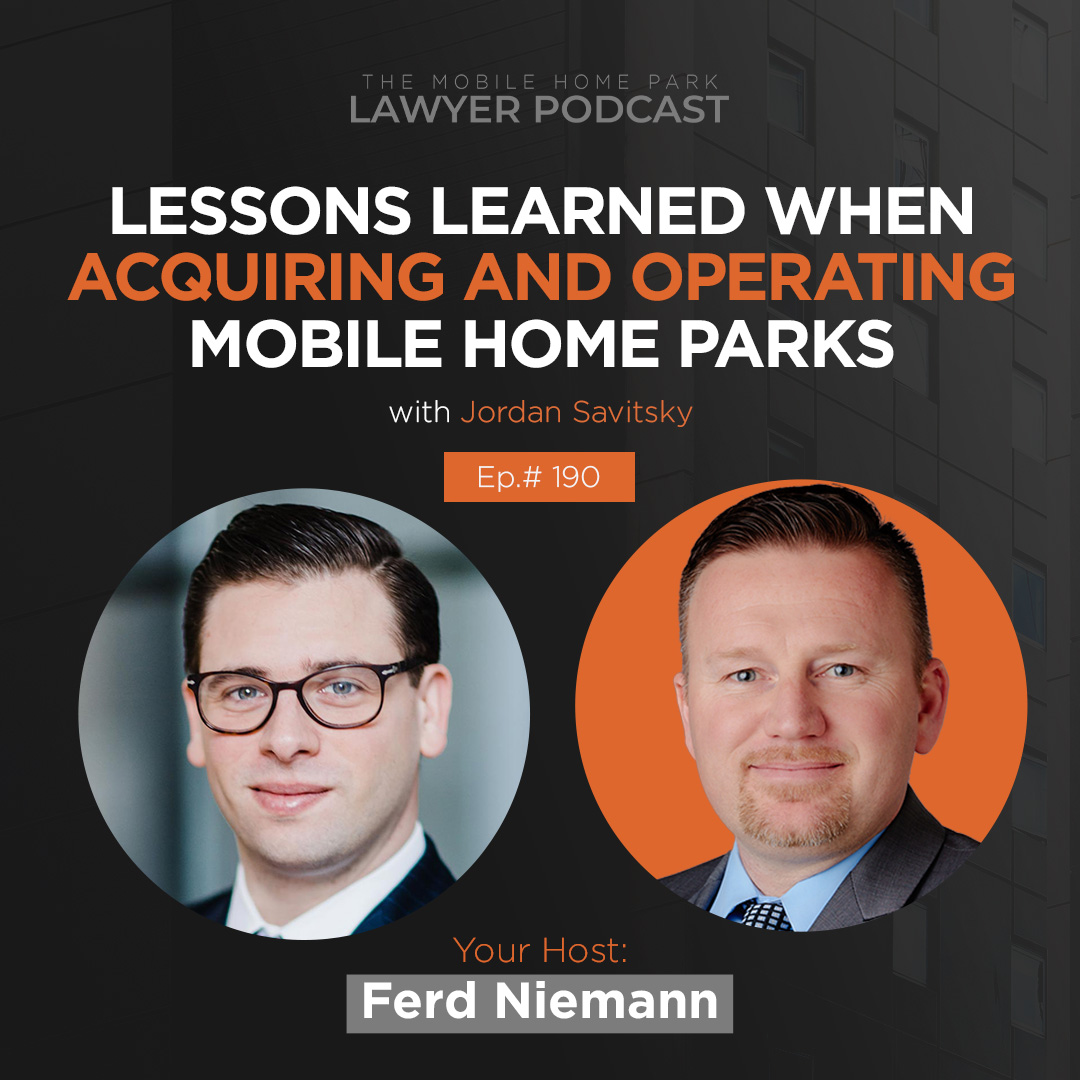Private capital has never been hotter for funding real estate acquisitions and other private business ventures. According to a recent SEC report, in 2019, for the first time, more capital was raised through Reg. D (the most widely used SEC private exemption) offerings than from registered offerings (i.e., IPOs). Most real estate syndications rely on Reg. D for their capital raising.
This proliferation of private capital and in particular, real estate syndications, has attracted entrepreneurs of all types – good and bad – seeking capital to fund their ventures.
How does a potential investor separate the credible syndications from the risky ones?
For evaluating syndication, potential investors will have three resources at their disposal for assessing the viability of a potential opportunity: 1) the Private Placement Memorandum (PPM), 2) the Offering Memorandum (i.e., Executive Summary) and 3) the promoters.
In a nutshell, the PPM is a disclosure document required by SEC regulations to be provided to investors to qualify for exemption from registration. In the PPM, the issuer makes comprehensive disclosures regarding the many aspects of the offering including, but not limited to: the terms of the offering, business description, promoter bios, financial terms, legal parameters, associated risk factors, etc.
The Offering Memorandum specifically details the business of the issuer including the company’s strategy, market discussion, financial projections, management description, etc.
The advantage of private offerings compared to public equities is the access to the promoters and managers afforded to potential investors. This access allows potential investors to interview and screen their potential co-partners of a real estate syndication.
Unfortunately, as with other industries, real estate syndications are not immune from scams or the workings of amateurs. Anyone can grab PPM and OM templates from the Internet and plug in their info to create an air of legitimacy. If you know what to look for, you’ll be able to separate the pros from the amateurs.
Evaluating a PPM
PPMs are written by lawyers and no lawyer is going to write a PPM from scratch every time. In other words, it will have a lot of canned language, particularly “Buyer Beware” type legal disclosures and disclaimers meant to scare investors off and protect a company and promoters if things go south.
Investors need to look beyond the canned language and focus on the specifics about the company, its offering, business strategy, use of funds, financials and management profile, and track record to properly evaluate the opportunity. Vague details about any of these vital components should scare investors away. If you see anything along these lines, run!
Although this is the first foray by our principals into the mobile home park (MHP) space, we are confident that our success in flipping a couple of homes should translate to this new venture. We’re not sure what exactly we’ll be looking for when acquiring a property, but like with flipping homes, we’ll know a good deal when we see it. Financial statements would be purely speculative at this point so we won’t bother you with the details.
I admit that I exaggerated the above example but I was trying to make a point – that point being that a company’s business strategy should be very specific and not vague. The pros will be very specific about every aspect of its business – right down to the cost of rehab expenses. There are amateurs out there raising capital, so you need to know what to look for in a syndication.
So what should prospective private investors be looking for in a PPM? Here are the vital sections of the PPM and what an investor should be looking for in these sections to separate syndication winners from losers.
1. Title Page and Introduction
The introduction typically offers a summary of the most vital terms of the investment including the name of the company, the type of security being offered, how much the company is seeking, the price of the offering, how the company intends to use the funds, investor compensation, investor qualification requirements, the minimum subscription amount, identification of management, the sponsor and principals. Pay attention to vagaries or unrealistic figures or expectations. Avoid unlimited offerings. Open-ended funds are often unfocused and more prone to risk. In your opinion, is the company overestimating or underestimating the amount required to carry out its business plan? Are the use of funds specific or are they unfocused?
2. Business Description
The Business Description section should provide a summary of the company’s business and overall investment strategy. If an OM is provided, the OM should include the specific details of the company’s business. If not, this section should include the information outlined below in the “Evaluating an OM” section.
In addition to a thorough discussion of the Company’s business and strategy, does the fund have a clear, defined strategy in a proven real estate asset class? Does management clearly communicate this strategy? Investors should avoid vague, unfocused, and speculative strategies. Syndications taking a scatter-shot approach with no defined asset class or geographic area or delving into asset classes where management has no familiarity or experience with should be avoided.
In summary, a clear and proven strategy will contain specific details such as clear-cut:
– Asset class
– Geographic focus
– Industry understanding
– Company and market data
– Development or renovation plan
– Financial projections
– Exit strategy
3. Management and Management Compensation
This section contains a description of the principals and management of the fund including biographies containing educational and professional background and experience.
Does management have a track record of success in the asset class in which the fund proposes to invest? Does management have the requisite experience and knowledge in the asset class and locales in which they are proposing to invest? In other words, is this particular investment in the manager’s “wheelhouse” or is this new territory? Be wary of managers undertaking a real estate class they’ve never invested in before. Due diligence and transparency are key. Do the managers make themselves available to answer questions?
On the matter of compensation, does management compensation seem reasonable? Excessive management fees can sap growth and profitability. Well-run syndications eliminate unnecessary fees or excessive fees. Beware of syndications where management compensation is derived predominantly from annual fees instead of from the financial success of the fund. Credible syndications typically pay managers only after the investor makes money (such as after investors receive a preferred return). Ideally, managers are compensated based on superb performance, such as when managers receive a larger piece of the ownership and a lower/no asset management fees or property management fees.
4. Projected Use of Funds and Financial Statements
The Projected Use of Funds section outlines in spreadsheet or table format the company’s projected sources and uses of funds. In terms of sources, is the company relying on other funding sources like debt for its acquisitions? (“Is the debt recourse to the manager/principal?” is always a good question for an investor to ask.) Are the projected sources and uses detailed and outlined or are they vague?
Included with most PPMs or OMs are pro forma financial statements showing the investment’s projected income for at least 5 years, and ideally over a ten year horizon (with a hypothetical sale in year 10, and an accompany set of investment metrics to measure projected performance). The failure by a fund to provide financial statements or coherent ones should be a red flag. When evaluating these pro forma statements, make sure the revenue projections are realistic and not overinflated and the expense projections are not overly conservative. If there is a leap in projected net income from one year to another, are these projections based on sound economic principles, or are they based on speculative factors? Beware of overpromising by management – see if management can defend the projections (and with a lens towards how the management is compensated, or not, for X level of performance).
5. Summary of the Offering
The Summary of the Offering or Summary of Principal Terms provides in table format a snapshot of the most important terms of the offering including company organization (entity type, date, and state of organization), investor qualification, minimum subscription, investor fees, management compensation, profit splits, and business and acquisition plan. If you’re in a hurry, this is the first section you should review to get a general snapshot of the company and the offering. Red flags should be immediately apparent in this section.
6. Risks
This section has the most amount of canned language that you’ll see in every PPM but you should be looking for risks specific to this investment (with pertinent risks even being set out in the Offering Memorandum or Business Plan). Does management understand any specific underlying risks and do they discuss them? A PPM that only lists universal risks is a sign that management has not looked at the specifics of this particular opportunity and should be a red flag.
One particular risk investors should pay attention to are the conflicts of interests involving management. Do they have a financial interest in the company that conflicts with investors? Are they making any affiliate loans or affiliate transactions? Do the principals operate other syndications that will demand their attention and time? (noting that most principals do/must have more than one project going, something that also boosts experience) Do the strategies of these other syndications conflict with those of this fund?
Evaluating the OM
The OM, if provided, should offer a thorough description of the company’s business and investment strategy, its plan for executing its strategy, all financing sources, its infrastructure, processes, investment criteria, market research, industry, and market analysis, competitors, demographics, economic indicators, post-acquisition plans, exit strategy, financial projections, etc…
Prospective investors need to go through the OM with a fine-tooth comb. Does the company’s proposed strategy support its investment and financial objectives? Does it have the infrastructure, processes, and personnel to carry out its plan and achieve the projected financial results?
Does the fund have a clear, defined strategy in its choice of real estate asset class? Does management clearly communicate this strategy? Investors should avoid vague, unfocused, and speculative strategies. Syndications taking a wild and random approach with no defined asset class or geographic area or delving into asset classes management has no familiarity or experience with should be avoided.
A clear, concise description of the company’s business goals and strategy along with realistic, thorough discussions of operations, results, and financial projections all point to a company with experience and the expertise to accomplish its goals.
Evaluating the Promoters
Besides what is provided in the PPM and OM in terms of bios and background information, potential investors also have the opportunity to evaluate the promoters either in person, by phone, or by web conferencing. This is the investor’s opportunity to interview the promoters. Treat it like a job interview. Ask thorough questions about background, experience, organization, infrastructure, and personnel. Also, don’t ignore their demeanor. Are they enthusiastic about the opportunity? Do they exude confidence and knowledge? Take good notes.
After the interview, do some due diligence. If the promoters dropped names of past projects or properties, research these projects and properties on the web. Look at their social media presence. Check out their LinkedIn profile. Who do they follow and who follows them? Are they connected to other real estate entrepreneurs and professionals? Experienced promoters will typically have a trusted circle of fellow real estate entrepreneurs. Beware of promoters who do not appear well-connected.
Syndications can be a source of tremendous financial reward but they can also be a source of financial pain in the wrong hands. Know what to look for when evaluating a syndication. Remembering the tips provided in this article when evaluating syndications will save you time and potentially money. Know what to look for and how to recognize red flags. Investing in the right syndication will provide you with a reliable source of passive income as well as profits from growth that will allow you to build wealth now and in the future.












